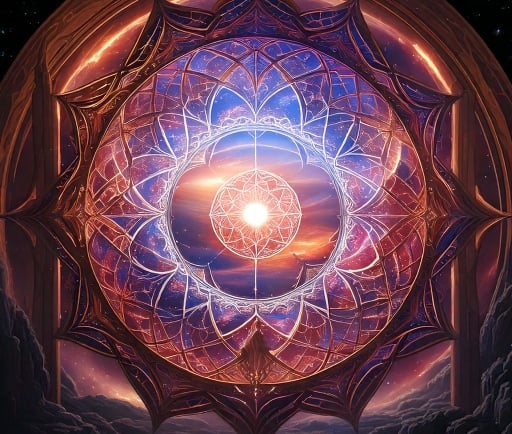Quantum Supersymmetry: Aesthetic Parallels with DNA through Rose Windows


Introduction to Quantum Supersymmetry
Quantum supersymmetry is an intriguing concept in theoretical physics that postulates a fundamental link between two distinct classes of particles: bosons and fermions. This symmetry suggests that for every known particle, there is a supersymmetric partner yet to be discovered. As we delve into this captivating theme, we can draw parallels between the complexity of quantum physics and the beauty found in nature, particularly through the application of design in rose windows and their resemblance to the double helix structure of DNA.
The Aesthetic Appeal of Rose Windows
Rose windows are architectural marvels, often embedded in the grand cathedrals of medieval Europe. These intricate designs serve not only an aesthetic purpose but also symbolize the connection between the divine and human understanding. Curved patterns and radial symmetry can frequently be observed in the arrangements of stained glass, which capture light and project vivid colors across the interior spaces. This aesthetic complexity mirrors the multifaceted nature of our molecular structures, like DNA, acting as a bridge between the physical and symbolic worlds. The elegance of rose windows can thus be interpreted as a metaphorical representation of structured symmetries found in quantum theories.
Connections Between Quantum Supersymmetry and DNA
Theoretical physicists propose that the principles of quantum supersymmetry extend beyond the realm of particle physics and manifest in broader fields. One such field is biology, particularly in the structure of DNA. The DNA double helix is emblematic of life’s complexity, encoding genetic information in a specific and ordered form, reminiscent of the structured patterns evident in rose windows. Each segment of DNA can be thought of as a 'window' into our genetic inheritance, revealing the ornamental and functional beauty of life itself.
Moreover, the very principles of symmetry and structure that govern the design of rose windows can be analogously applied to the spatial organization of DNA molecules, wherein each atom’s position often adheres to symmetrical arrangements. This interconnectedness highlights the fundamental relationships that unify nature’s many forms, from grand architectural structures to microscopic biological entities.
Ultimately, the exploration of quantum supersymmetry intertwined with the design of rose windows elucidates an underlying aesthetic that transcends mere physical laws. It encourages a deeper appreciation of how complex systems, whether in physics or biology, reflect similar patterns of order and beauty. Much like the enchanting play of light through rose windows, the quests for understanding in the quantum world illuminate the convergence of art, science, and life.
